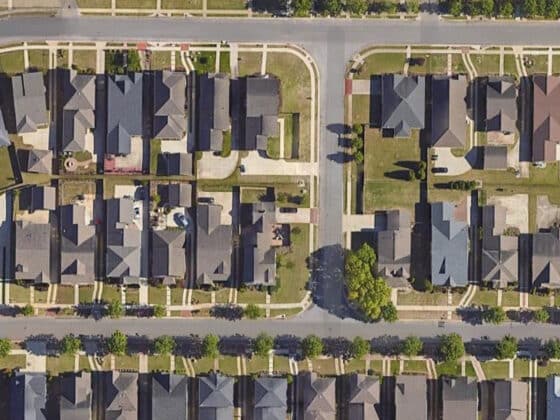Key Takeaways
- Define Your Lifestyle Needs: Make a list of must-haves like quality schools, parks, and commute options to guide your search.
- Research Safety and Market Trends: Utilize tools like CrimeMapping, ADT Crime Maps, and Neighborhood Scout to ensure your chosen area aligns with your security expectations.
- Visit at Different Times and Talk to Locals: Chat with potential neighbors or use the Nextdoor app to gain valuable insights about the community.
Ready to find a neighborhood that feels like it was made just for you? Finding the right community is as crucial as choosing the right house—it’s where you’ll make your morning coffee, take evening strolls, and maybe even watch your kids play. The old adage “location, location, location” still holds true. It’s about more than just streets and houses; it’s about finding a place where you’ll create lasting memories.
Whether you’re buying your first home or relocating to a new city, let’s dive into how you can find that perfect neighborhood to call home, one that fits your lifestyle to a T!
What Do You Love? Define Your Lifestyle Needs
Before you start your search, let’s identify what you need and what you want from a neighborhood. Are you looking for a quiet, family-friendly community, or are you more interested in a vibrant area with easy access to shops, restaurants, and nightlife? What does your ideal day look like? Are you hustling to a nearby coffee shop, or are you enjoying a quiet morning jog in a leafy park?
Make a list of your daily must-haves: things like school quality, nearby parks, cafes, gyms, and transportation options. This list will guide you through the house-hunting process and help you focus on neighborhoods that truly fit your criteria.
Here are a couple of great resources we love to help you check out the overall vibe of a community based against your list of must-haves:
- AreaVibes – scores neighborhoods with a livability score that makes it easy to compare neighborhoods in a potential area quickly. Quickly see how a neighborhood scores from A-F across criteria like: Crime & Safety, Schools, Commute & Employment, Amenities, and Cost of Living.
- Neighborhood Scout – A great tool to scope out the local real estate market, housing mix of homeowners and renters, what your neighbors are like, the employment scene and typical commute times.
Safety First: Checking Up on Neighborhood Security
Your peace of mind is priceless, so let’s make sure you feel safe and secure in your new neighborhood. Fortunately, many resources are available to help you research the safety of potential areas. Websites like CrimeReports and the National Sex Offender Public Website provide up-to-date information about crime statistics and safety concerns in different neighborhoods. Here are some links to some good resources:
- ADT Crime Maps – see color-coded safety ratings by county
- CrimeMapping.com – see recent crime reports as pins on a map
- National Sex Offender Public Website – search an address to see registered sex offenders within a radius
- Family Watchdog – view registered sex offenders on a map
Sometimes, nothing beats a good old-fashioned visit to the local police station or attending a neighborhood watch meeting to get the real scoop from the folks who live there.

Education for the Kids (and Property Values for You!)
If you have little ones, the quality of local schools is probably at the top of your priority list. Websites like GreatSchools can offer insights into the local education landscape, helping you compare educational opportunities and make a smart investment in your family’s future and your financial health.
Even if you don’t have kids, living in a district with good schools can boost your property value significantly.
Commute and Connectivity: Getting From Here to There
Your daily commute can have a significant impact on your quality of life. Think about how much of your day you want to spend traveling to work or other activities. If you’re using Neighborhood Scout to scope out communities of interest, you’ll be able to see the average commute time of residents in that area. Plus, you can take advantage of Google Maps to check traffic patterns for potential commute routes at different times of the day.
If you prefer to skip the drive, look into neighborhoods that are friendly to bikers, walkers, or have good public transit. Many cities have dedicated websites that provide real-time updates on public transportation schedules and routes. It’s all about making your daily commute a breeze!

Amenities and Fun: What’s Around the Neighborhood?
The amenities available in a neighborhood can greatly enhance your lifestyle. Look for a community that aligns with your interests, whether it’s outdoor activities, arts and culture, or dining and entertainment. Imagine living within walking distance from a charming little bistro or just a short bike ride from a beautiful park. Explore potential neighborhoods to see what they offer in terms of shopping, dining, and recreational activities.
Plan a day trip (or a weekend if you’re looking at neighborhoods far away) and visit local shops, parks, museums, and restaurants to get a feel for the community vibe and see if it matches your lifestyle.
Real Estate Savvy: Know the Local Market
Before falling in love with a neighborhood, make sure it’s a smart buy. Getting to know the local real estate market by checking out property values, historical price trends, and the overall demand for homes in the area. You can take advantage of online tools like Zillow and Realtor.com to research a lot about the local market.
Consulting with a local real estate agent can tell you things about the feel of a neighborhood and its future growth potential that you can’t get from property value stats and help you catch the wave at just the right time.
All About Timing: Visit the Neighborhood at Different Times
Visiting a neighborhood at different times of the day and week can give you a clearer picture of what it’s like to live there. It might show a different face on a quiet morning compared to a busy evening. If you can, visit your potential new neighborhood at various times to get a well-rounded view of what it’s like living there. Does it get too noisy at night? Is it too quiet during the day?
Pay attention to traffic noise, parking availability, and the general activity level in the community. This can help you decide if the neighborhood suits your lifestyle and daily routines.

Neighborly Love: Chat Up Potential Neighbors
Don’t be shy—talk to potential neighbors about what it’s like to live in the area. Most people love talking about their neighborhood and can offer insights you won’t find anywhere else. They can provide firsthand accounts of what it’s like to live in the area, the pros and cons, and how the community has evolved. Plus, it’s a great way to make a few friends before you even move in!
If you aren’t quite the type to get chatty with strangers face-to-face, you could join the neighborhood on the Nextdoor app. You can read recent posts, introduce yourself, and ask your potential neighbors questions about the area through the app.
Future Forward: Development and Growth
Lastly, check out what the future holds for any area you’re considering. Future developments, infrastructure projects, or zoning changes can affect your lifestyle and the long-term value of your property. The more you know about future factors, the more confidently you’ll be able to picture your future in this new community and anticipate potential changes to your home’s value over time.
A quick visit to the local planning department can give you a heads-up on upcoming projects or changes that might affect the neighborhood. This can include new construction, commercial development, or changes to parks and public areas.
Wrapping it Up
Finding the right neighborhood isn’t just about the house—it’s about envisioning your life unfolding day by day. Whether it’s the sound of kids playing, the tranquility of a garden, or the convenience of urban living, your perfect neighborhood is out there. By taking the time to thoroughly research and explore your options, you can find a community that not only meets your needs but also enhances your day-to-day life.
Finding the perfect neighborhood isn’t just about checking boxes—it’s about finding a place where you can truly feel at home. You’re crafting your best future. Happy neighborhood hunting!

Eco-Friendly Homes: Your Path to Healthier, Happier Home Finances
Read more...















